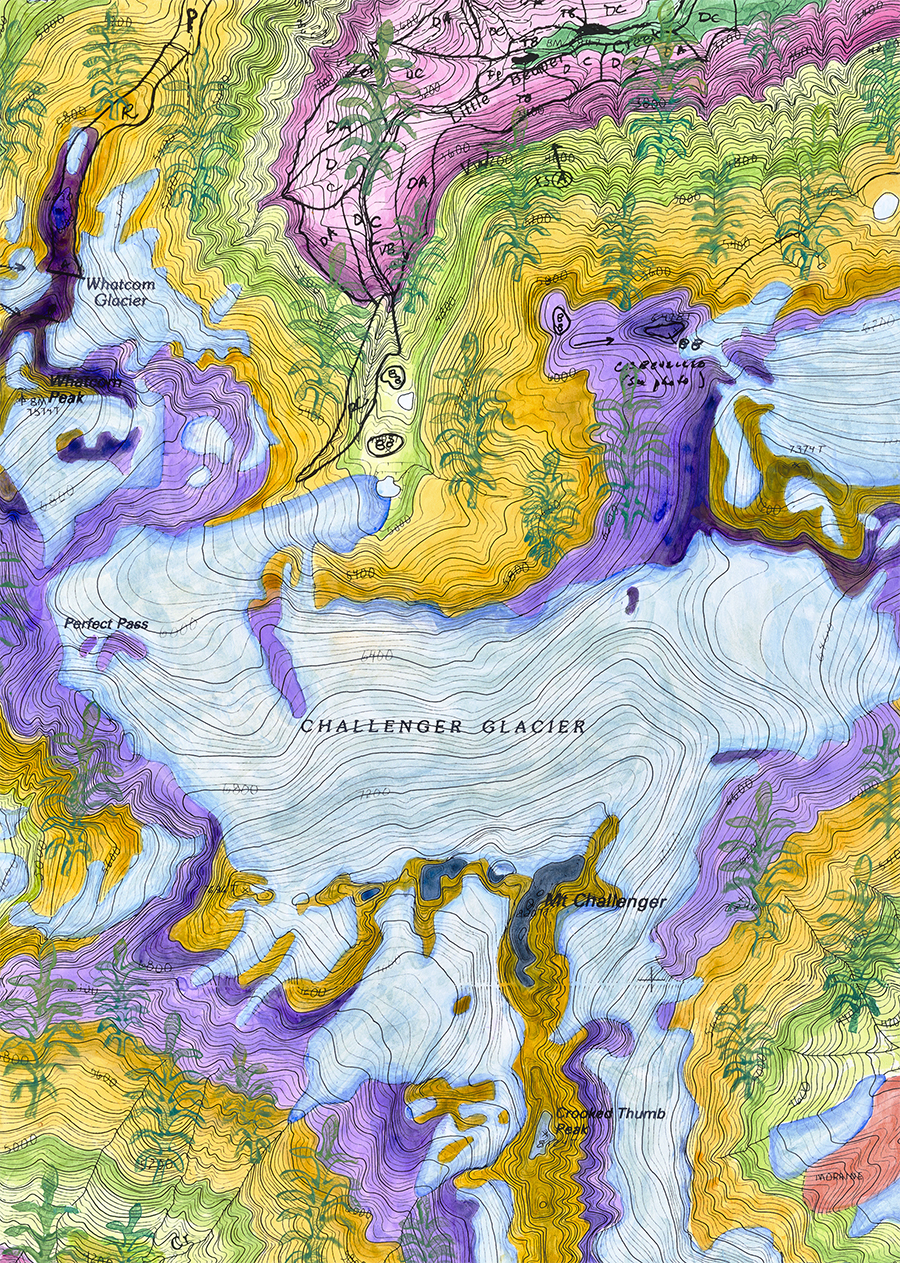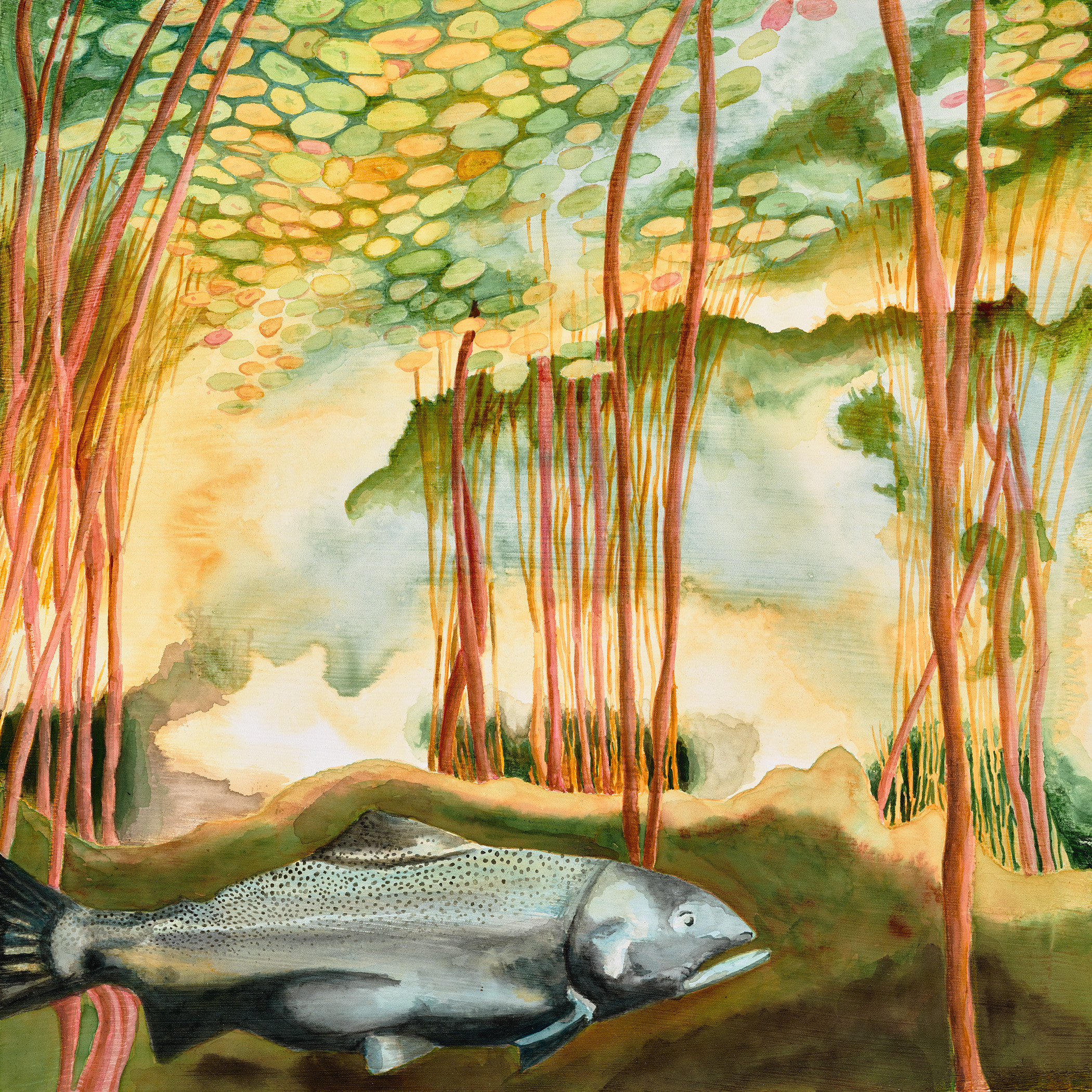The Lay of the Land: Glacial Biocenosis [update]
Encased in ice are secrets, minerals: mica, iron, phosphorus fossilized bodies of ferns and microbes, megafauna, mysteries of life, the living planet. We read these as charts, maps and stories to guide us
![The Lay of the Land: Glacial Biocenosis [update]](/content/images/size/w2000/2018/08/Marblemount-detail-1.jpg)
I just posted a new image for the header of Planet Art blog, a detail of the installation I've been working this year for the third Surge exhibition at the Museum of Northwest Art in La Conner WA. I've included here the statement for the exhibition and some images in process and final ones as they become available. Surge information at the museum's website includes a list of artists and scientists from the Skagit Climate Science Consortium involved in this exhibition. I've been working with Jon Riedel, a glacier geologist with North Cascades National Park. See more information about the [Consortium]http://www.skagitclimatescience.org/about-us/
Here is a link to Jon's visual essay about his work, glaciers and his philospohy, Keepers of the Beat: https://www.youtube.com/watch?v=IJTKmAC1U6Y
Here is a link to the Museum's page on Surge 2018, the exhibition which extends from October 6, 2018-January 7, 2019. It opens October 6, reception from 2-3:30pm
https://www.monamuseum.org/surge-2018

The Lay of the Land: Glacial Biocenosis, Challenger 1, [detail], 2018, acrylic mixed media, digital media on paper, 46 x 147 cm, historic map from 1989.
Encased in ice are secrets,
minerals: mica, iron, phosphorus
fossilized bodies of ferns and microbes, megafauna,
mysteries of life, the living planet.
We read these as charts,
maps and stories to guide us
to track where ancient people walked and pondered:
the geologic cross sections,
evidence to explore the universe.
The imagery and texts in this installation evoke dramatic changes in the Skagit River watershed ecosystem resulting from erosion, climate changes to glacier areas including fluctuation in glacier meltwater and biocenosis, the biological interaction with environmental systems. Here are paths of scientist and artist, for use as exploratory tools and guides for visitors. For our communities in the Pacific Northwest, here is a grid to offer contemplation on the difficulties in our present peril of Skagit instability.
The bounty of the Skagit watershed was nourished by 30,000 years of glacial geology, and Hozomeen sites date indigenous artifacts from 8,000 years ago. “Indeed, the presence of glaciers in the Skagit may be why it hosts all five native species of Pacific salmon (Wydoski and Whitney 2003, cited in Riedel and Larrabee, 2016).”
Now global climate change disturbs aquatic ecosystems, agriculture, freshwater supply and our hydroelectric energy. Glacier area has declined 19% between 1959 and 2009 (Riedel and Larabee). Streamflow and soluble mineral access are reduced as glaciers melt, become lakes. The ecosystem needs to create a new equilibrium.
We are in the midst of experiencing a paradox described by Miranda Massie, founder and director of The Climate Museum, New York: the issue of human time and scale with the urgency of the moment framed within geologic time scales represented by artists such as Zaria Forman and Peggy Weil. Massie invokes James Baldwin on the struggle for racial equality and common humanity, “There is never a time in the future in which we will work out our salvation. The challenge is the moment; the time is always now.” (interview with Massie by Caroline Craig in onEarth, National Resources Defense Council, January 19, 2018).
Topographic maps appeal to me because they are created by physically active scientists and engineers whose intimate contact with the terrain informs their documentation. Jon graciously made available historic maps of the North Cascades showing landmarks which no longer exist due to erosion and other natural effects. I am interested in the temporal nature of these maps and the evasiveness of the geography to reinforce a static view. Images of common flora and fauna appear as warnings of extinction/impact on other living communities. Fossil fuel generated climate change alters their homes and food supplies as it does our own.
In its relentless desire for control, the Western landscape tradition distances the viewer from these systems, offering a timeless illusion. In June 2011, while exhibiting and presenting in Gyeongju, Korea, I witnessed the dramatic impact of Typhoon Maeri with massive flooding, loss of life and livelihood. Yet traditional technologies refined over hundreds of years had by the 8th Century CE managed flooding, soil retention and, at Bulguk-sa, a Buddhist temple community complex near Gyeongju, the urban comfort of tens of thousands of people in a concentrated area. I contemplate what North Cascades Park archeologist Bob Mierendorf advised: to understand wilderness, we must be open to the existence of many past cultural landscapes.
Alice Dubiel with Jon Riedel, August 2018

The Lay of the Land: Glacial Biocenosis, Fraser River salmon, 2017, acrylic on wood, 30x30cm.

The Lay of the Land: Glacial Biocenosis, Marblemount, 2018, acrylic mixed media, digital media on paper, 46 x 147 cm
Acknowledgements
This project is possible with the support of many people. It is with deep gratitude to my imagers, Art & Soul of Seattle for their help and underwriting in digitally scanning and printing the maps and their digital documenting the works, Abby Inpanbutr, Tod Gangler and Oona Peterson. The scope of this work would have been much reduced without them. Thanks also to my framer, Suzanne Burnell, Koenig Burnell Framing for mounting and making hardware for hanging the maps. Her creativity and solutions for presentations are practical and elegant. Thanks especially to geologist Dr. Jon Riedel for his enthusiastic inspiration, information and map loans. He is a tireless communicator and a deeply ethical imaginative thinker. The work of the Skagit Council Climate Consortium has inspired three projects for MoNA Surge and each scientist I've worked with has been amazing in imagination and resources. Thanks also to the Museum of Northwest Art, notably Chloe Dye Sherpa for her curatorial work and Christopher Shainin who created this Surge exhibition and activity concept with the Consortium. I'm grateful also to my circle of friends through Medieval Women's Choir who performed in the first Surge performance piece, and visual art friends. Discussing technical shop talk always inspires solutions. Finally, I want to thank my husband, Jim Hopfenbeck and our son Robin Flowers, for their assistance in the studio and at home. Both provided essential transportation when and where needed. Jim's endless cheer and his support of my work has blessed my life for nearly 40 years. Thank you everyone. May all blessings flow from our mother earth, Gaia of infinite complexity and intelligence.
